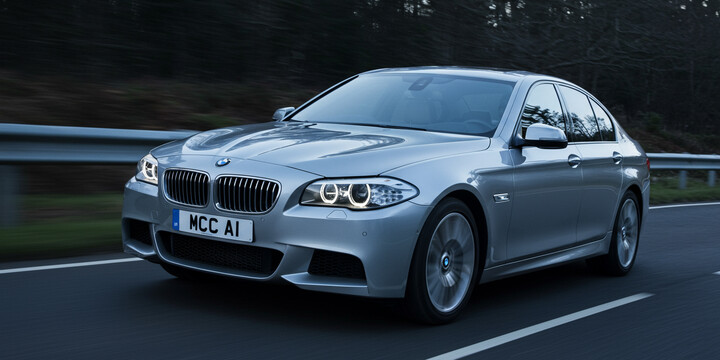
BMW 5 SERIES (2010-13) 528I 4DR SALOON 2.0 SS 245 EU5 SE BUSINESS MEDIA 6SPD
The BMW 5 SERIES (2010-13) 528I 4DR SALOON 2.0 SS 245 EU5 SE BUSINESS MEDIA 6SPD is a stylish and well-built executive saloon that offers a comfortable driving experience alongside practicality and sophistication. As part of the renowned BMW 5 Series lineup, this model is popular among drivers seeking a blend of luxury, performance, and everyday usability. Its sleek design and reputation for quality make it a competitive choice in the executive car market in the UK.
Typically used for commuting, family trips, or business purposes, this BMW saloon suits those who value comfort and style without sacrificing driving enjoyment. Its 2.0-litre engine provides a balanced mix of fuel efficiency and performance, making it an appealing option for daily drivers and long-distance travelers alike. Known for its reliability and engaging drive, the 5 Series holds a strong reputation against rivals like Audi A6 and Mercedes-Benz E-Class. With features like media connectivity and a smooth 6-speed transmission, the BMW 5 SERIES (2010-13) 528I is a popular choice for drivers looking for a premium vehicle that offers both practicality and prestige.

average use

The recent mileage data for the BMW 5 Series (2010-13) 528I indicates that the most common recorded readings are distributed evenly across four ranges: 60,000 to 70,000 miles, 80,000 to 90,000 miles, 90,000 to 100,000 miles, and 110,000 to 120,000 miles, each accounting for 25%. This even distribution suggests that there is no predominant mileage mark for these vehicles, reflecting diverse usage patterns among owners. Buyers should consider verifying the actual mileage, especially for vehicles nearing higher ranges, to ensure accurate vehicle history.

vehicle values

The private sale valuation data for the BMW 5 Series (2010-13) 528I suggests a fairly targeted price distribution. Half of the vehicle valuations fall within the £8,000 to £9,000 range, indicating this as the most common or typical private sale price. Meanwhile, 25% are valued between £7,000 and £8,000, and another 25% between £6,000 and £7,000. This distribution implies a concentration of private sale prices around the £8,000 mark, with a notable portion priced below that, reflecting a potential for buyers to find vehicles at or below the £8,000 level. Overall, the data indicates a relatively narrow private sale price band centered just under £9,000 for this model, which could assist buyers and sellers in setting expectations or pricing strategies.

production years

The data indicates that the majority of the BMW 5 Series (2010-13) 528I models are from the year 2012, accounting for 75% of the sample. In comparison, 25% of these vehicles are from 2011. This suggests a higher prevalence or availability of 2012 models within this range, possibly reflecting production or registration patterns during that period.

colour popularity

The data indicates that for the BMW 5 Series (2010-13) 528I 4-door saloon, the main paint colours are evenly distributed among four hues: white, grey, silver, and blue, each comprising 25% of the vehicles in the sample. This balanced distribution suggests a diverse range of preferred colours among owners, with no single colour dominating the market for this model.

ownership cycle

The data indicates that among the sample of BMW 5 Series (2010-13) 528I 4-door saloons, a quarter of the vehicles have had nine registered keepers, suggesting these may be older or more extensively used cars. Half of the vehicles have had four registered keepers, indicating moderate ownership changes. The remaining 25% have only had two registered keepers, which could imply they are relatively newer or better maintained vehicles with fewer previous owners. Overall, the distribution suggests a mix of vehicle usage histories, with no single ownership pattern dominating the sample.

engine choices

The data indicates that all BMW 5 Series (2010-13) 528I 4-door Saloon models analyzed are equipped with a 2.0-liter engine capacity and exclusively use petrol as their fuel type. This uniformity suggests a consistent engine size and fuel choice across this particular model range, which may be useful for buyers or fleet managers seeking specific specifications for the vehicle.












